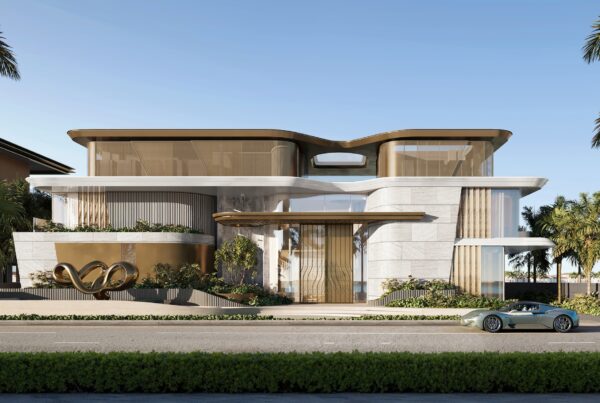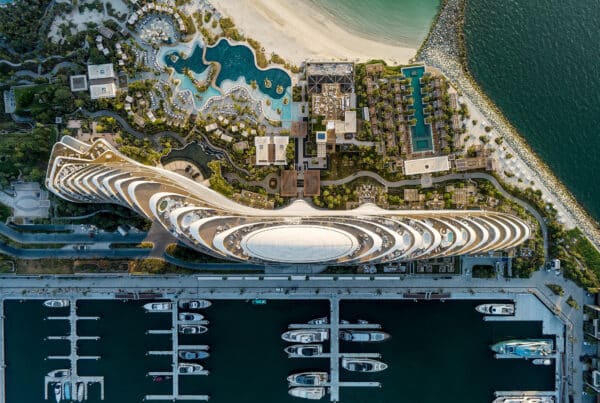
In an exclusive interview, architect Shaun Killa reveals what guests can expect from Dubai’s superyacht-shaped luxury hotel, Jumeirah Marsa Al Arab
By Katharina Kotrba, Contributor | March 2025
Ever since news of its construction broke, Dubai’s Jumeirah Marsa Al Arab has ranked high on the list of the world’s most anticipated hotel openings. Now, as the resort nears its debut, we spoke with architect Shaun Killa to dive into the design, the details, and what makes Jumeirah Marsa Al Arab stand out in a city known for pushing the boundaries of luxury.
Killa chose a sleek, yacht-inspired silhouette and an overall focus on quiet luxury—prioritizing quality over quantity and understated elegance over extravagance. This is a marked departure from Dubai’s signature skyscrapers and often bolder, high-energy interpretation of luxury.
Jumeirah, Dubai’s state-owned hospitality company, has a track record of redefining the rules of hospitality. Standout properties, like the opulent, sail-shaped Jumeirah Burj Al Arab put Dubai on the map when it opened 25 years ago. To this day, it goes by its moniker as the ‘world’s only 7-star hotel.’
A quarter of a century later, the group aims to make the new Jumeirah Marsa Al Arab the next icon in hospitality, describing it as ushering in ‘a new epoch’.
The two Jumeirah hotels are in close proximity; Jumeirah Marsa Al Arab sits just 1,500 feet across from the Jumeirah Burj Al Arab on its own purpose-built peninsula in the ocean.
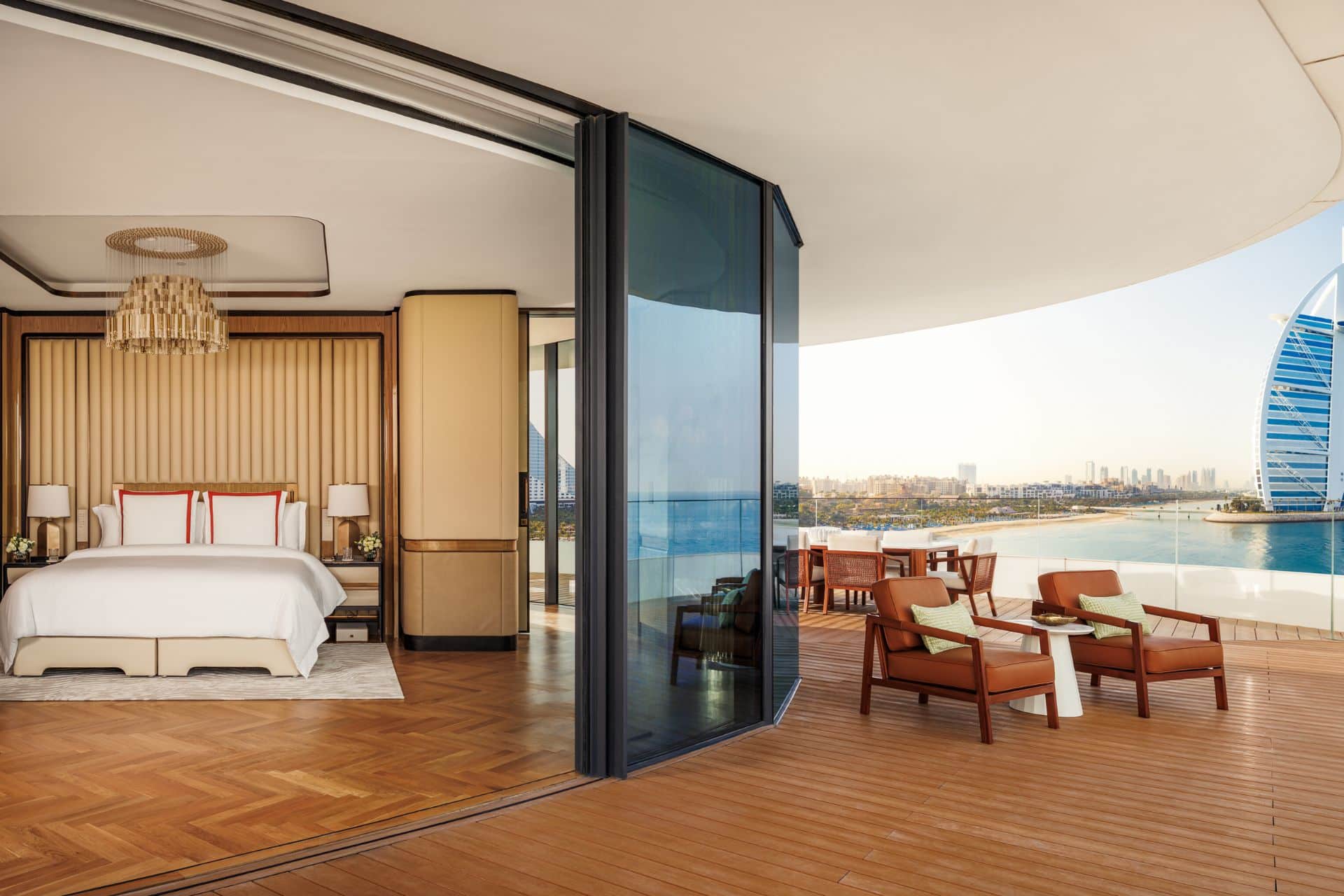
“When we were asked to design Jumeirah Marsa Al Arab, the brief was clear,” Killa explains via video call. “It had to complement the Jumeirah Burj Al Arab, not compete with it.”
Where Jumeirah Burj Al Arab rises skyward with sharp edges, Jumeirah Marsa Al Arab curves and flows like a yacht moving out of the harbor.
Once inside, guests will find what Killa describes a “deeper sense of luxury”: 386 rooms designed as private retreats with balconies, a big focus on well-being with a three-story wellness area spanning nearly 40,000 square feet and 13 treatment suites with private terraces, and an expansive dining lineup with four bars and a staggering eleven different restaurants.
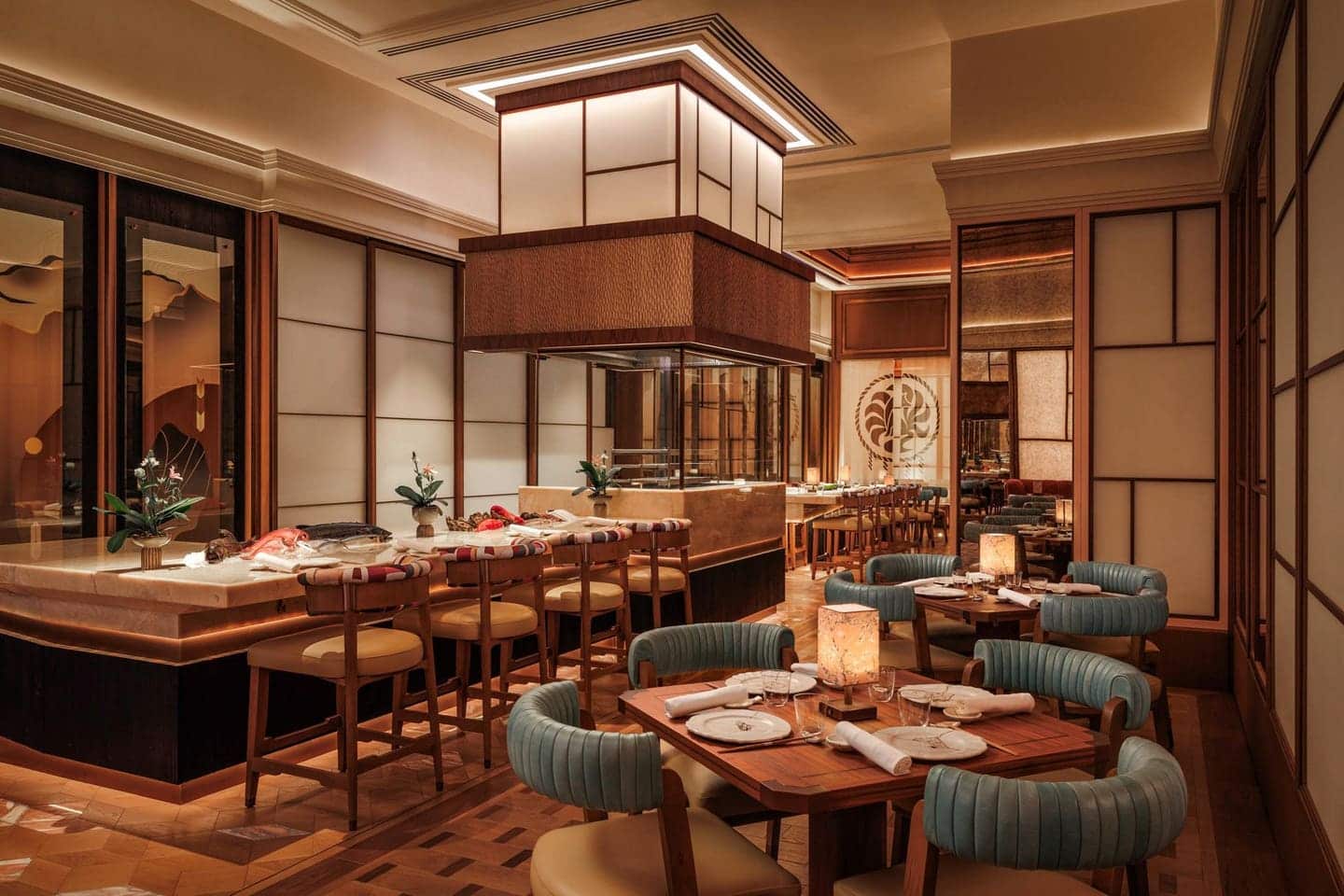
The outdoors come with an 82-berth marina, a waterfront promenade, four pools, two sandy beaches, nine ocean-view private villas and 82 serviced residences.
The elongated hotel building takes center stage on the peninsula with its asymmetrical design, defined by double-curved lines, gentle convex and concave forms, and a smooth contour that tapers at both ends. These flowing forms create the impression of movement—like a ship gliding through the water.
The hotel building reaches a maximum height of 16 stories. An unusual choice in an era where developers prioritize height to optimize land use, which is often the case in Dubai, home to the world’s tallest building, the Burj Khalifa, and soon home to the second tallest also, once construction of the new 131-story Burj Azizi is completed.
“I wanted to design something both elegant and timeless—a structure that complements its surroundings rather than competes with them,” Killa explains.
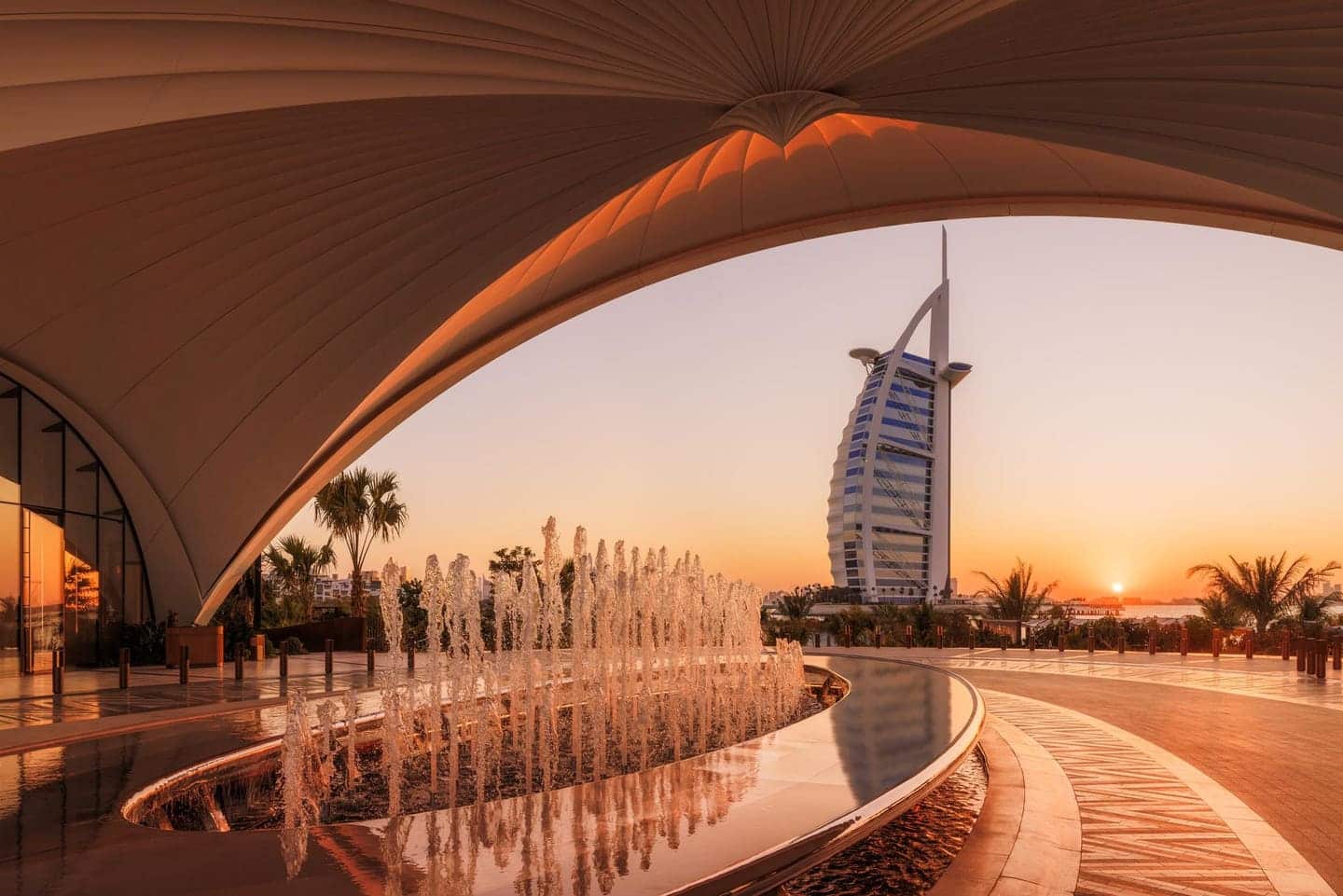
Instead of vertical reach, Killa’s Jumeirah Marsa Al Arab has different methods to create memorable experiences, starting at arrival: As soon as guests pass through the entrance gates, the driver navigates a road that curves and twists toward the lobby.
Lush, jungle-like greenery obscures potential views of the building. “There’s a sense of anticipation as you wind through the entrance, until suddenly, the view opens up, and you find yourself standing beneath this grand arch.”
This curved portico, four stories high, spans a remarkable 120 feet without a single supporting column. Despite its weight of 3,000 tons, the arch appears to float effortlessly while carrying the remaining 12 floors above it.
Big Emotional Impact Upon Arrival
“We designed it to have an emotional impact, a true sense of arrival that makes people feel something the moment they arrive.”
But it isn’t just about the scale: In addition to its enormous and surprising size, the open cutout in the building serves as a larger-than-life framework for the deep blue ocean behind it—as well the Jumeirah Burj Al Arab.
”We’ve positioned the arch to be perfectly aligned with the Jumeirah Burj Al Arab and the sunset beyond, to create a picture-perfect moment where architecture and setting come together seamlessly,” Killa explains.
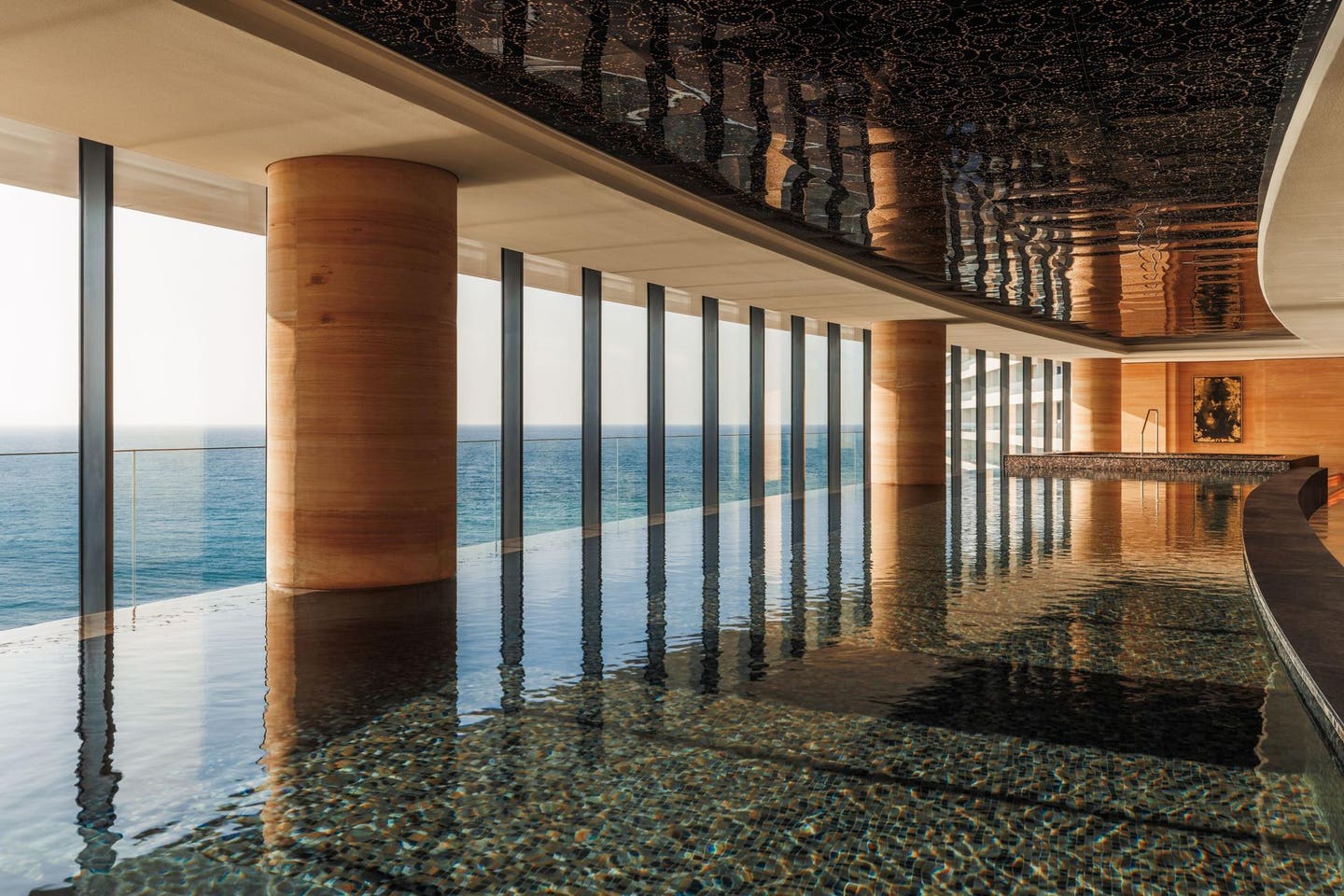
”For decades, visitors have come to Dubai to capture the Jumeirah Burj Al Arab,” he continues, ”and we wanted to honor that legacy. I have no doubt that this arch is where the most photos will be taken.”
Those arriving at night are welcomed by a different version of Killa’s less-is-more approach: the façade emits a gentle, singular shade of warm, soft white light. No multicolor displays or light show effects—just a subtle, warm white glow.
“I prefer lighting that enhances a building’s form rather than overwhelms it,” the architect says. “It’s the same philosophy we used with the Museum of the Future. I love when a building’s presence is defined by this kind of subtlety.”
Small, elegant spaces instead of a large lobby
This philosophy extends to the interiors, where Jumeirah Marsa Al Arab emphasizes personal moments over grand gestures. Instead of a large lobby, Killa’s long, yacht-like layout guides guests through intricately crafted, smaller spaces with restaurants, bars, hidden nooks and alcoves.

“You’re on your own progressive journey of discovery. The experience unfolds as you move through it, revealing new moments and hidden details at every turn. I think people will love it because it’s rarely done this well,” he says.
Five designers shaped the interiors, creating distinct moods using warm, refined color palettes. The design evokes the feeling of being invited into a private home or aboard a luxurious yacht, says Killa, paying homage to Dubai’s heritage and the Bedouin tradition of hospitality—where guests are welcomed with food, drink and kindness.
With Dubai’s Jumeirah Marsa Al Arab’s grand opening day around the corner, how does the architect plan to celebrate the arrival of the first visitors?
“I’d like to sit somewhere quietly and observe how guests interact with the spaces we’ve designed,” Killa says. ”Where will they naturally gravitate? What details make them stop and take a photo? Those moments, when people experience a space in the way you imagined, are the greatest reward as an architect.”



